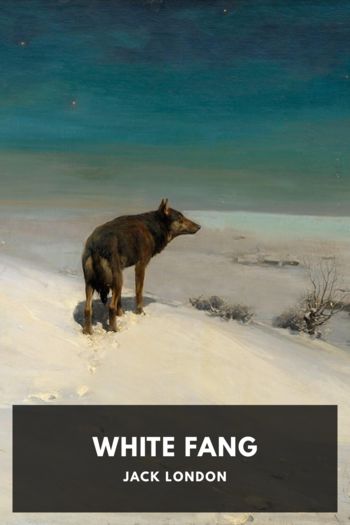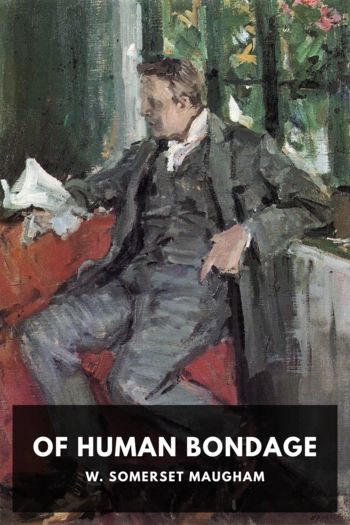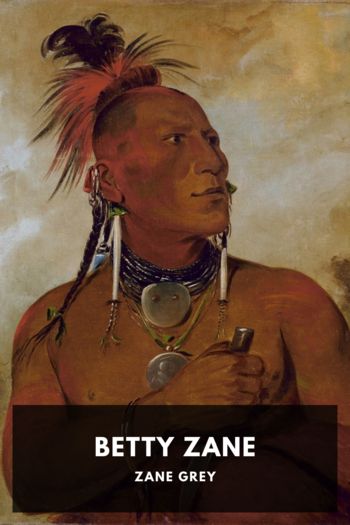White Fang by Jack London (good book recommendations txt) 📕

Description
White Fang is Jack London’s companion novel to The Call of the Wild. In The Call of the Wild we follow a dog’s journey from domestication to wilderness, but in White Fang we see the opposite: a wild wolf-dog captured by men and eventually domesticated.
White Fang’s journey isn’t an easy one; both the wild and civilization have their share of brutal violence. But he eventually seems happy in a home with a loving family. When read side-by-side with The Call of the Wild, White Fang poses an interesting question: is wilderness really an improvement over civilization? Is there one right way to live?
Read free book «White Fang by Jack London (good book recommendations txt) 📕» - read online or download for free at americanlibrarybooks.com
- Author: Jack London
Read book online «White Fang by Jack London (good book recommendations txt) 📕». Author - Jack London
When the steamboat arrived at Dawson, White Fang went ashore. But he still lived a public life, in a cage, surrounded by curious men. He was exhibited as “the Fighting Wolf,” and men paid fifty cents in gold dust to see him. He was given no rest. Did he lie down to sleep, he was stirred up by a sharp stick—so that the audience might get its money’s worth. In order to make the exhibition interesting, he was kept in a rage most of the time. But worse than all this, was the atmosphere in which he lived. He was regarded as the most fearful of wild beasts, and this was borne in to him through the bars of the cage. Every word, every cautious action, on the part of the men, impressed upon him his own terrible ferocity. It was so much added fuel to the flame of his fierceness. There could be but one result, and that was that his ferocity fed upon itself and increased. It was another instance of the plasticity of his clay, of his capacity for being moulded by the pressure of environment.
In addition to being exhibited he was a professional fighting animal. At irregular intervals, whenever a fight could be arranged, he was taken out of his cage and led off into the woods a few miles from town. Usually this occurred at night, so as to avoid interference from the mounted police of the Territory. After a few hours of waiting, when daylight had come, the audience and the dog with which he was to fight arrived. In this manner it came about that he fought all sizes and breeds of dogs. It was a savage land, the men were savage, and the fights were usually to the death.
Since White Fang continued to fight, it is obvious that it was the other dogs that died. He never knew defeat. His early training, when he fought with Lip-lip and the whole puppy-pack, stood him in good stead. There was the tenacity with which he clung to the earth. No dog could make him lose his footing. This was the favourite trick of the wolf breeds—to rush in upon him, either directly or with an unexpected swerve, in the hope of striking his shoulder and overthrowing him. Mackenzie hounds, Eskimo and Labrador dogs, huskies and Malemutes—all tried it on him, and all failed. He was never known to lose his footing. Men told this to one another, and looked each time to see it happen; but White Fang always disappointed them.
Then there was his lightning quickness. It gave him a tremendous advantage over his antagonists. No matter what their fighting experience, they had never encountered a dog that moved so swiftly as he. Also to be reckoned with, was the immediateness of his attack. The average dog was accustomed to the preliminaries of snarling and bristling and growling, and the average dog was knocked off his feet and finished before he had begun to fight or recovered from his surprise. So often did this happen, that it became the custom to hold White Fang until the other dog went through its preliminaries, was good and ready, and even made the first attack.
But greatest of all the advantages in White Fang’s favour, was his experience. He knew more about fighting than did any of the dogs that faced him. He had fought more fights, knew how to meet more tricks and methods, and had more tricks himself, while his own method was scarcely to be improved upon.
As the time went by, he had fewer and fewer fights. Men despaired of matching him with an equal, and Beauty Smith was compelled to pit wolves against him. These were trapped by the Indians for the purpose, and a fight between White Fang and a wolf was always sure to draw a crowd. Once, a full-grown female lynx was secured, and this time White Fang fought for his life. Her quickness matched his; her ferocity equalled his; while he fought with his fangs alone, and she fought with her sharp-clawed feet as well.
But after the lynx, all fighting ceased for White Fang. There were no more animals with which to fight—at least, there was none considered worthy of fighting with him. So he remained on exhibition until spring, when one Tim Keenan, a faro-dealer, arrived in the land. With him came the first bulldog that had ever entered the Klondike. That this dog and White Fang should come together was inevitable, and for a week the anticipated fight was the mainspring of conversation in certain quarters of the town.
IV The Clinging DeathBeauty Smith slipped the chain from his neck and stepped back.
For once White Fang did not make an immediate attack. He stood still, ears pricked forward, alert and curious, surveying the strange animal that faced him. He had never seen such a dog before. Tim Keenan shoved the bulldog forward with a muttered “Go to it.” The animal waddled toward the centre of the circle, short and squat and ungainly. He came to a stop and blinked across at White Fang.
There were cries from the crowd of, “Go to him, Cherokee! Sick ’m, Cherokee! Eat ’m up!”
But Cherokee did not seem anxious to fight. He turned his head and blinked at the men who shouted, at the same time wagging his stump of a tail good-naturedly. He was not afraid, but merely lazy. Besides, it did not seem to him that it was intended he should fight with the dog he saw before him. He was not used





Comments (0)